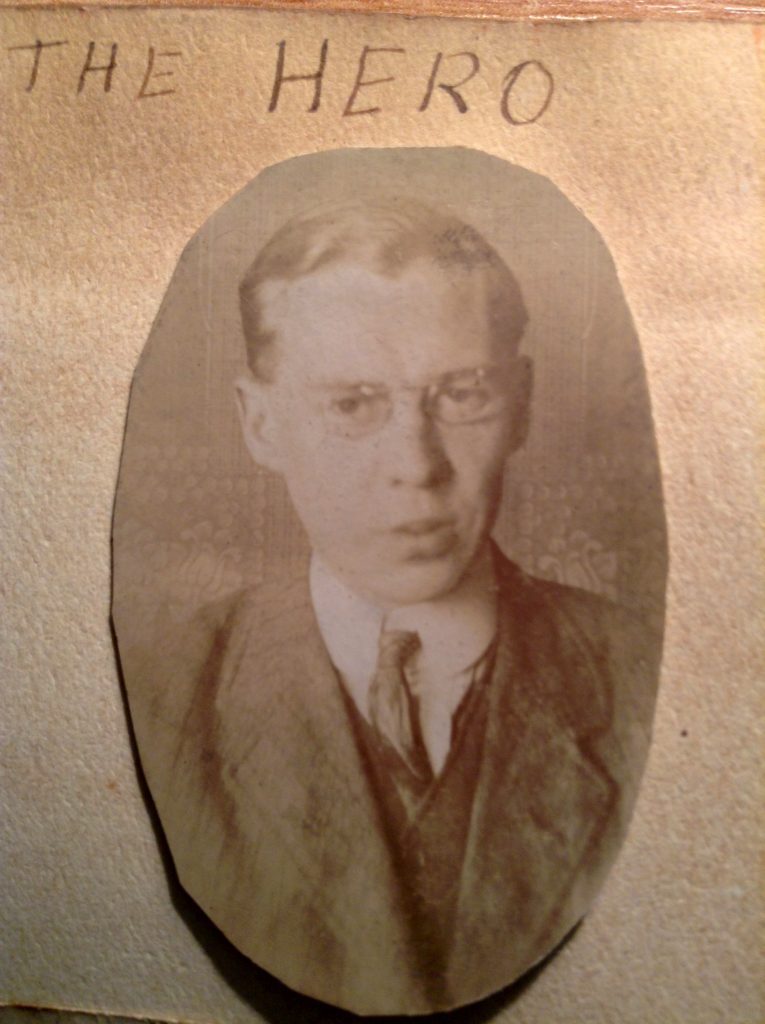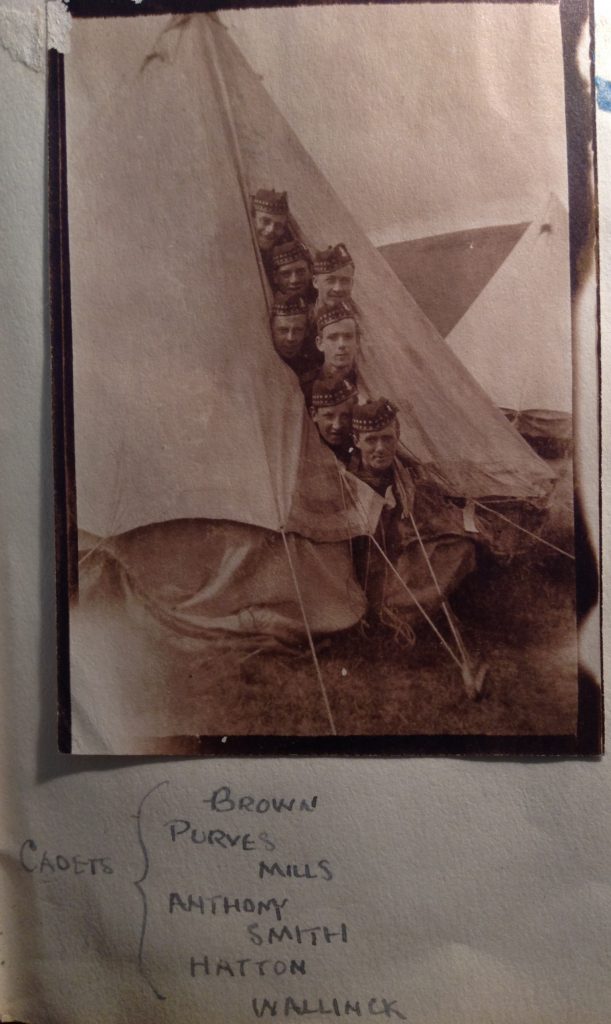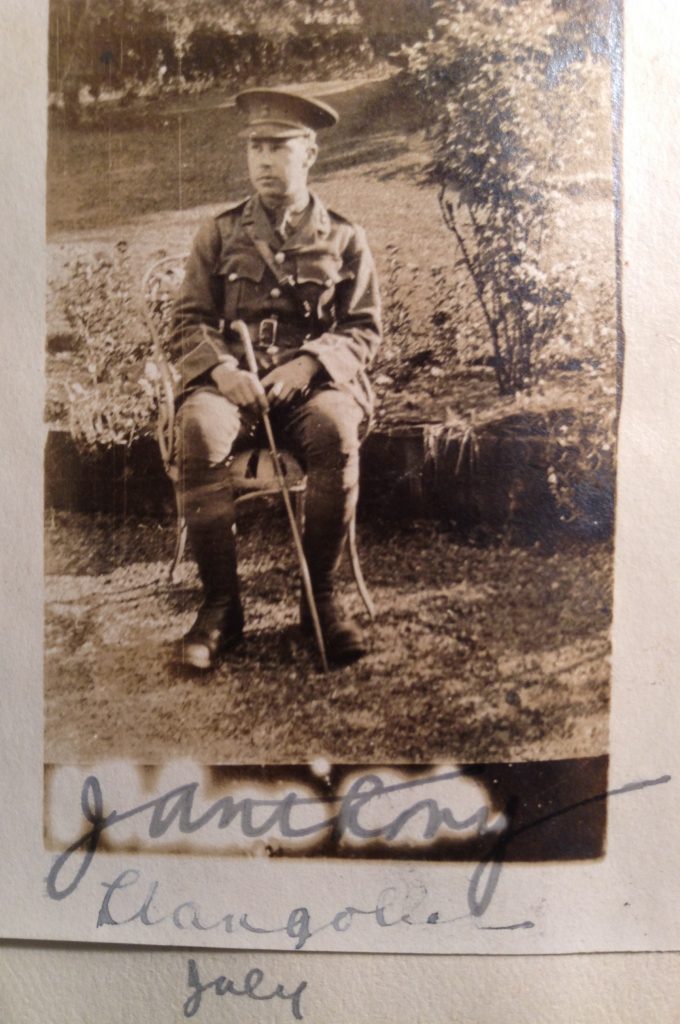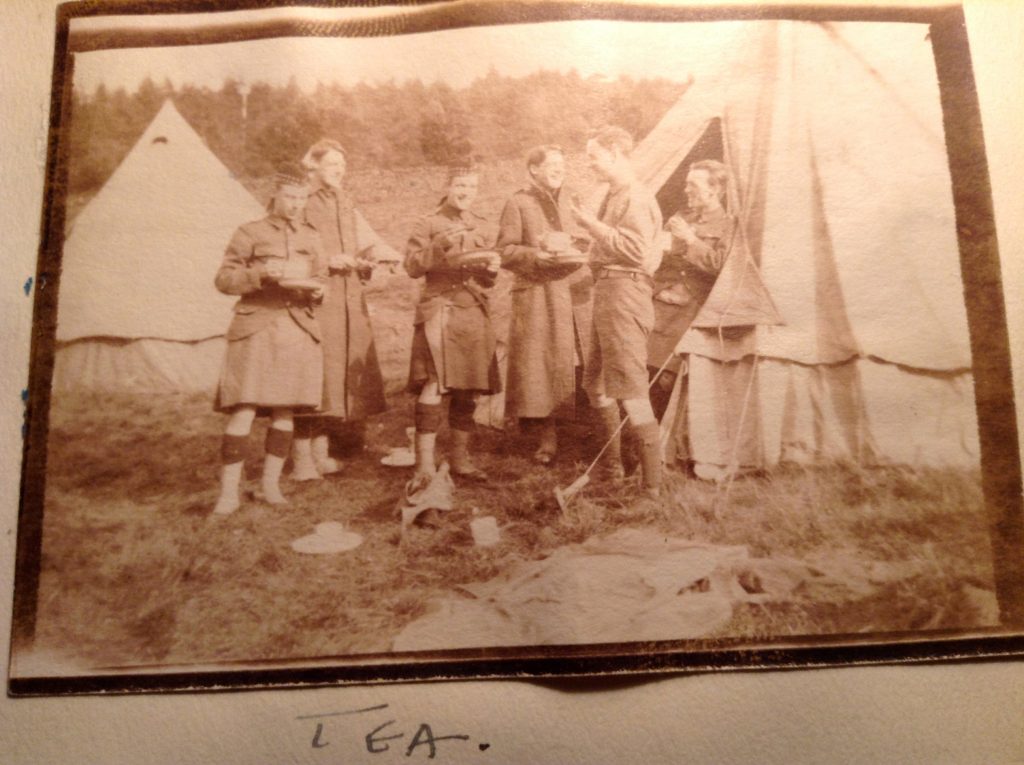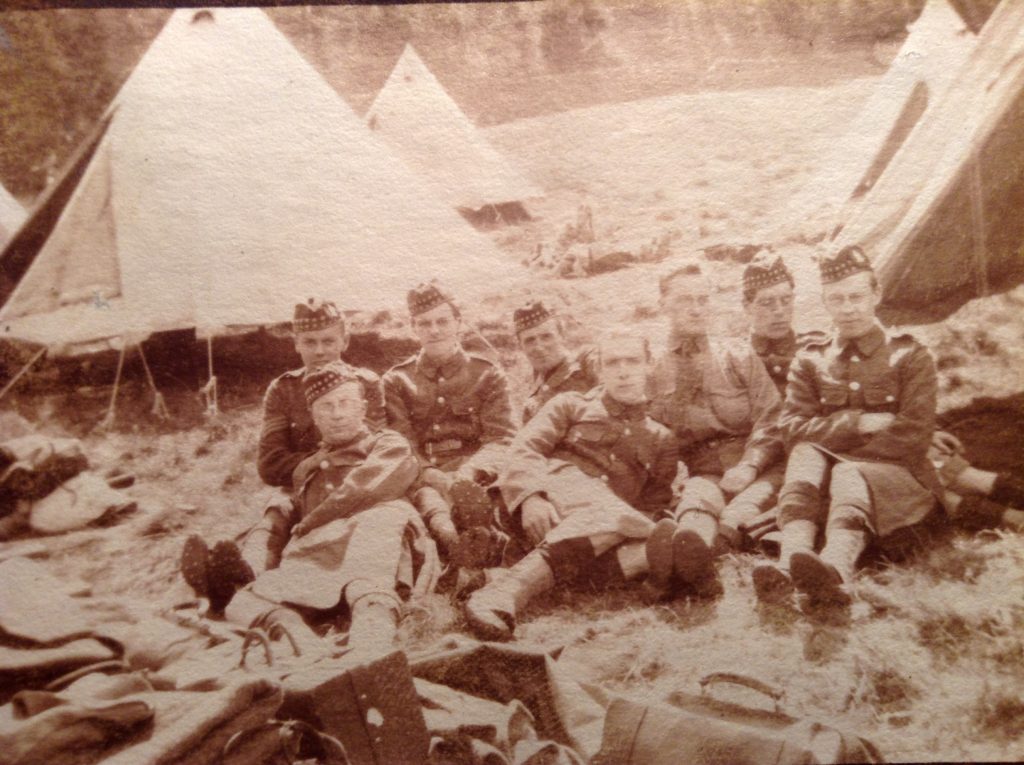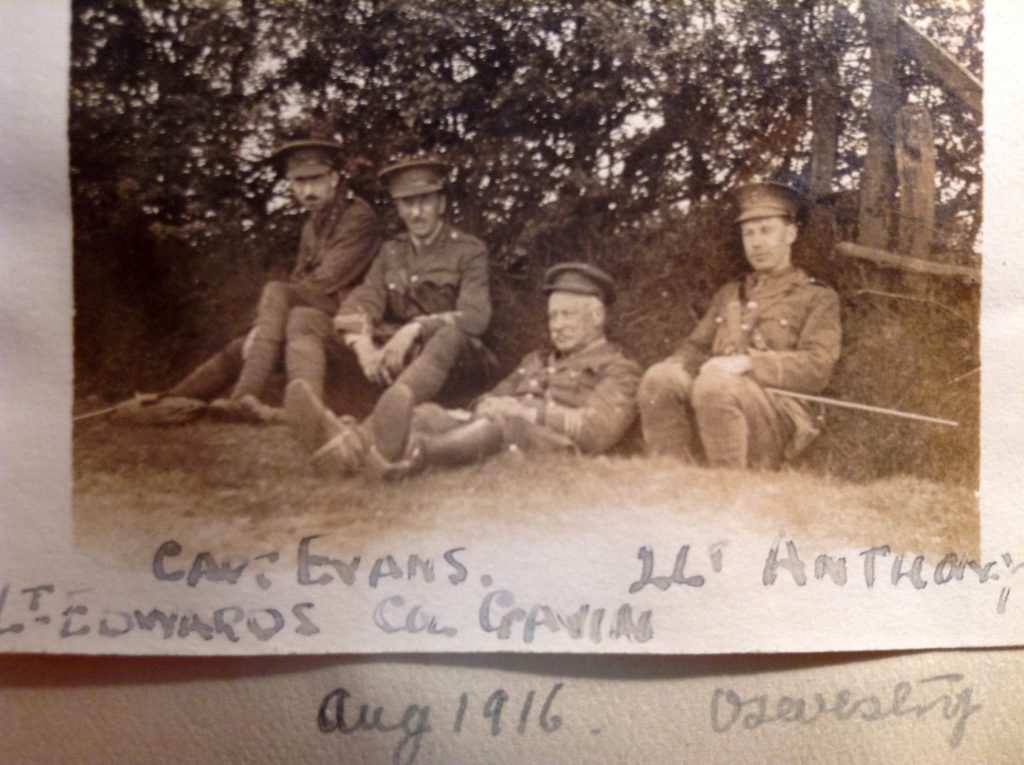The Battle of the Somme commenced at 7:30am on the 1st July 1916, an offensive lasting for 141 days of blood, mud and horror. The first day stands out in terms of casualties as one of the worst days for the British Army – 57,470 casualties, including 19,240 fatalities. The objectives of the offensive were to take pressure off the French army who were at that time engaged in a vicious battle with the Germans at Verdun by attacking the Germans to the north of this, and in doing so attempt to capture the plateau between the rivers Somme and Ancre.
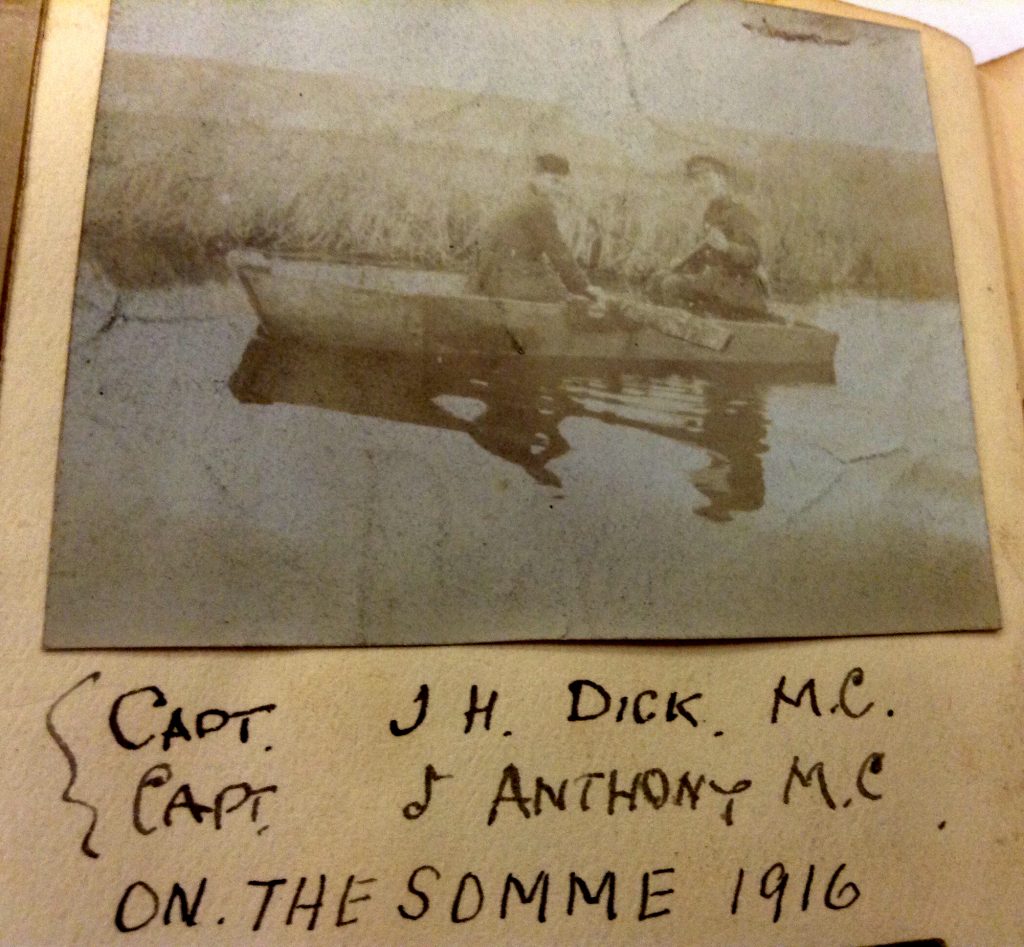
Photograph of James Hamilton Dick and John Anthony (both 2nd Lieutenants at the time) on the Somme in 1916. Both were to win Military Crosses by 1918.
Considering the length of the battle and the number of Scottish battalions involved, it must be that many men listed on RBGE’s Roll of Honour were involved in this offensive although it is hard to say who – with many battalions being merged and assigned new names and men leaving battalions to reinforce others at this time it becomes more complicated to follow our soldiers’ progress in the War. I do know that we have no fatalities at all listed during the period of the Battle of the Somme, so it must be concluded that although it’s possible there may have been men wounded, none of our staff who left RBGE at the beginning of the War to join the army were killed at the Somme in 1916.
In our Archive collections however, we do have a small album of photographs of soldiers, one of which is titled “Capt J.H. Dick M.C., Capt J. Anthony M.C., On the Somme 1916”, so it seems timely to look at this album now (although I’m reasonably sure neither men were sent to France until September 1916). There are many names in the album, so it was only fairly recently spotted that the album was put together by John Anthony, or perhaps a member of his family as he is referred to within as ‘The Hero’ which by all accounts of his modesty, doesn’t sound like a name he would have used for himself!
John Anthony was born in Edinburgh in December 1891. He attended Boroughmuir and George Heriot’s School, entering the University of Edinburgh in 1911 to read Arts and Science. His studies were interrupted with the outbreak of war in 1914 and he joined the University’s Officer Training Corps as a cadet in 1915. In October 1915 he joined the 5th Royal Welsh Fusiliers as a 2nd Lieutenant and was promoted to Lieutenant in in July 1917. He became an Acting Captain in August 1917 when he was attached to the 7th Royal Warwickshire Regiment to command one of their Companies. It was shortly after this time that Anthony was awarded a Military Cross (the M.C. referred to on the Somme photograph above) for conspicuous gallantry and devotion to duty – he took command of his Company during a night time relief in Italy when during heavy shelling the officer in charge was wounded. Anthony quickly reorganised the section and was able to drive off two enemy attacks on advanced posts thus saving lives and maintaining the position of the line.
.
Altogether John Anthony spent eight years in military service, fighting on the Western Front in France, and also in Italy, Egypt and Palestine. He wasn’t able to return to his University studies until 1923 as the War Office had him engaged in educational work in the Middle East after the war ended. Anthony was eventually to spend the rest of his life working in education. He completed his M.A. in 1924 and his B.Sc. in 1926 before going to Malaya to work on a large rubber estate for five years, returning home in 1932 to become an assistant lecturer in Botany at Dundee University. He began his connection with RBGE in 1934 when our then Regius Keeper, William Wright Smith asked him to join Edinburgh University’s teaching staff as a lecturer in Forest Botany, and any other botanical subject he was called upon to teach. During this time he developed an interest in wood anatomy and intended writing a book on the subject – indeed, the typed manuscript for this work entitled “The Identification of British Trees, Shrubs and Undershrubs by means of the Microscopic Structure of their Wood” is housed in RBGE’s archives.
John Anthony did eventually have a book published, albeit posthumously. After his retirement in 1958 he and his wife worked on a flora of Sutherland, spending all his spare time exploring the botany of this county and compiling a typescript, which he did not live to see published. The Botanical Society of Scotland published it in 1976, four years after his death in 1972 at the age of 80. It is still seen as a tribute to a modest and good humoured man, fondly remembered by the staff at RBGE who knew him.
The Album
The photograph album itself is small and plain and marked with the name and crest of the Allan Glen’s School, although the link between Anthony and that school is not known. There are photos of Anthony’s family, his friends, views around Edinburgh including Colinton Dell, blurry locomotives on the Caledonian railway, and of course, Anthony and some of his fellow cadets and soldiers, often in very relaxed, laid back poses, enjoying the calm before the storm.

